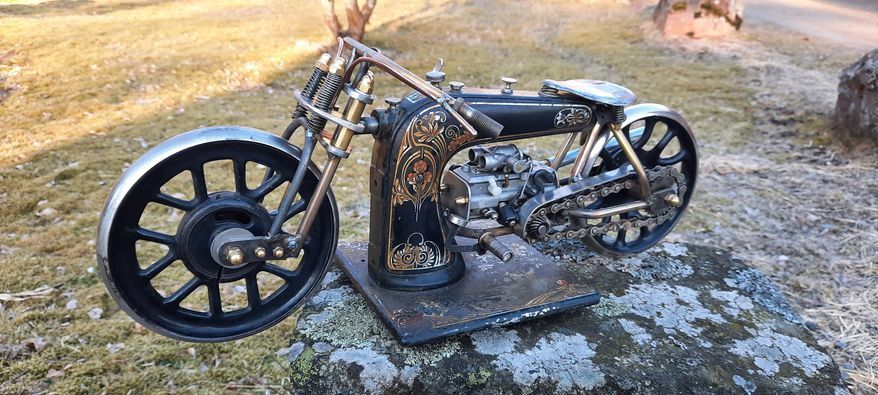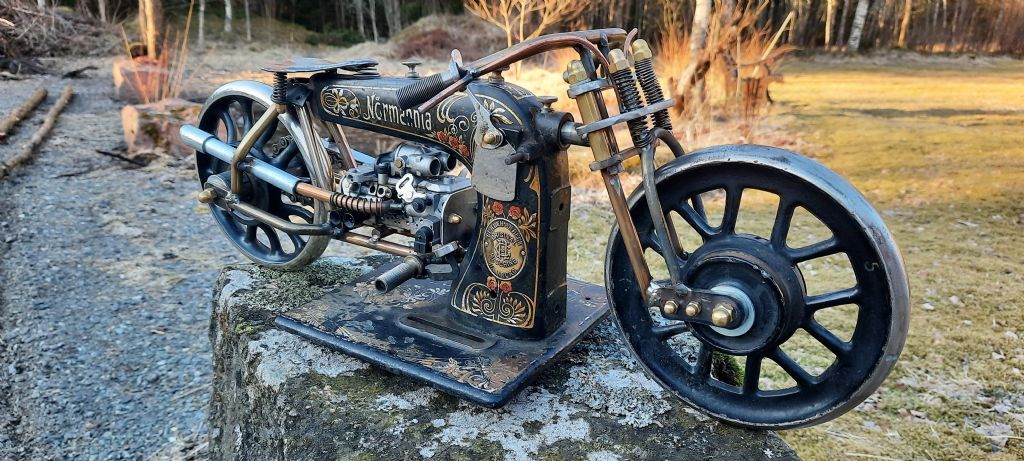I looked to see what Wikipedia has to say about Basset Lowke.
This Wiki's own Abstract:
" Bassett-Lowke was a toy company in Northampton, England, founded by Wenman Joseph Bassett-Lowke in 1898 or 1899, that specialized [sic] in model railways, boats and ships, and construction sets. Bassett-Lowke started as a mail-order business, although it designed and manufactured some items. "
Further Wiki quotes signified by same formatting.
I am aware that W. is not always as authoritative or complete as it appears, but its information this time does not carry warnings of such, or requests for proper citations..
'
What this revealed is that Bassett-Lowke was not a manufacturing concern but primarily a retailer of both other's products (including Marklin and Bing), and of ones it commissioned from a number of other companies.
In its early days it was particularly noted for waterline scale models of merchant and naval ships, evidently faithful enough for the Armed Services to use the larger scales for ship-recognition training. These were all made by contractors.
It raises an interesting question Wiki does not address. Who actually designed and built the live-steam locomotives, up to 15" gauge, sold under the Basset-Lowke name?
What is fact did B-L make?
'
Decline –
Wiki's sources point to this starting in the 1950s, from various reason but particularly people using B-L's free catalogue to select models they could now buy in very similar form more cheaply elsewhere, and from a decline in the popularity in technical models and toys from the late-50s on. They note similar in the USA, affecting equivalent companies there.
1964: B-L ceased retail operations, sold its shops in 1964
1965: BL closed completely.
1966: Bassett-Lowke acquired by Messrs Riley and Derry (no mention of their line, nor a link).
1969: Ivan Rutherford Scott, Allen L. Levy and Roland H. Fuller tried to revive the model railway business.
Late 1980s, Northampton businessman Nigel Turner, bought the business, based it alongside his existing "Turner's Musical Merry-Go-Round".
1993: the name was revived with short-run white-metal models: a Burrell-type traction engine and steam-roller, Clayton undertype steam-wagon, and London B-type bus.
1996: Corgi bought the name for its live-steam 0-gauge locomotive range.
" Key competitors to Bassett-Lowke were Hornby and Exley."
2008: Hornby acquired Corgi, continued the 0 gauge models for a while.
2020: Hornby introduced its 00- gauge steampunk models " based on existing Hornby toolings ".
2021: " brick-based construction models with steampunk themes… under the Bassett-Lowke branding as the 'brickpunk' range aimed at both children and adults ".
Oh! So does this mean the Steampunk engines are not really Basset-Lowke at all, but Hornby? So why has Hornby, with its own long history of model-railways, attached the name of its one-time competitor to them and to a wholly-new model range, rather than its own?
'
So what of the larger steam locomotives B-L built, or commissioned?
This was a separate business, under a different name; and most of the locomotives were designed by Henry Greenly. Wiki though does not say if it physically built the machines, or had them made by engineering contractors.
" In 1912 W. J. Bassett-Lowke, Robert Proctor-Mitchell and John Wills set up Narrow Gauge Railways Ltd (NGR) to promote and run 15-inch (380 mm) railways. An earlier company, Miniature Railways of Great Britain Ltd, went into voluntary liquidation in 1912. NGR's first railway opened in 1912 at Luna Park, … Geneva.. In Britain, the Ravenglass & Eskdale Railway was taken over, converted to 15-inch (380 mm) gauge and re-opened in 1915. The Fairbourne Railway followed in 1916. "
At least some of these locomotives are still running. One of the 1912 Luna Park engines was saved by the Transport Museum from being scrapped in 1974, and is now displayed in Zánkafürdő Railway Station, Hungary.
''''
So would Wenman Joseph Basset-Lowke be spinning in his grave?
Possibly not at the railway vehicles, and new architectural range, in steam-punk styles; but he may be in full-gear at the way competitor Hornby has used his name for products derived from its own, past, range.
======
The comment about declining interest in technical models seems paralleled by the hobby of electronics. Until perhaps the late 1970s, building, and indeed designing, electronic equipment of all sorts was a popular hobby supported by magazines like Radio Constructor and Practical Wireless, and by many independent and chain components-retailers. The lack of similar publications and traders now suggest amateur electronics now survive only in a few niches such as in model-engineering (motor-controllers and CAD/CAM projects) and amateur radio. The electronics magazines now seem dedicated only to reviewing computers and music equipment, and perhaps sorting out technical problems, but building anything? Oh no!
Edited By Nigel Graham 2 on 16/04/2021 09:52:58
Mick B1.







